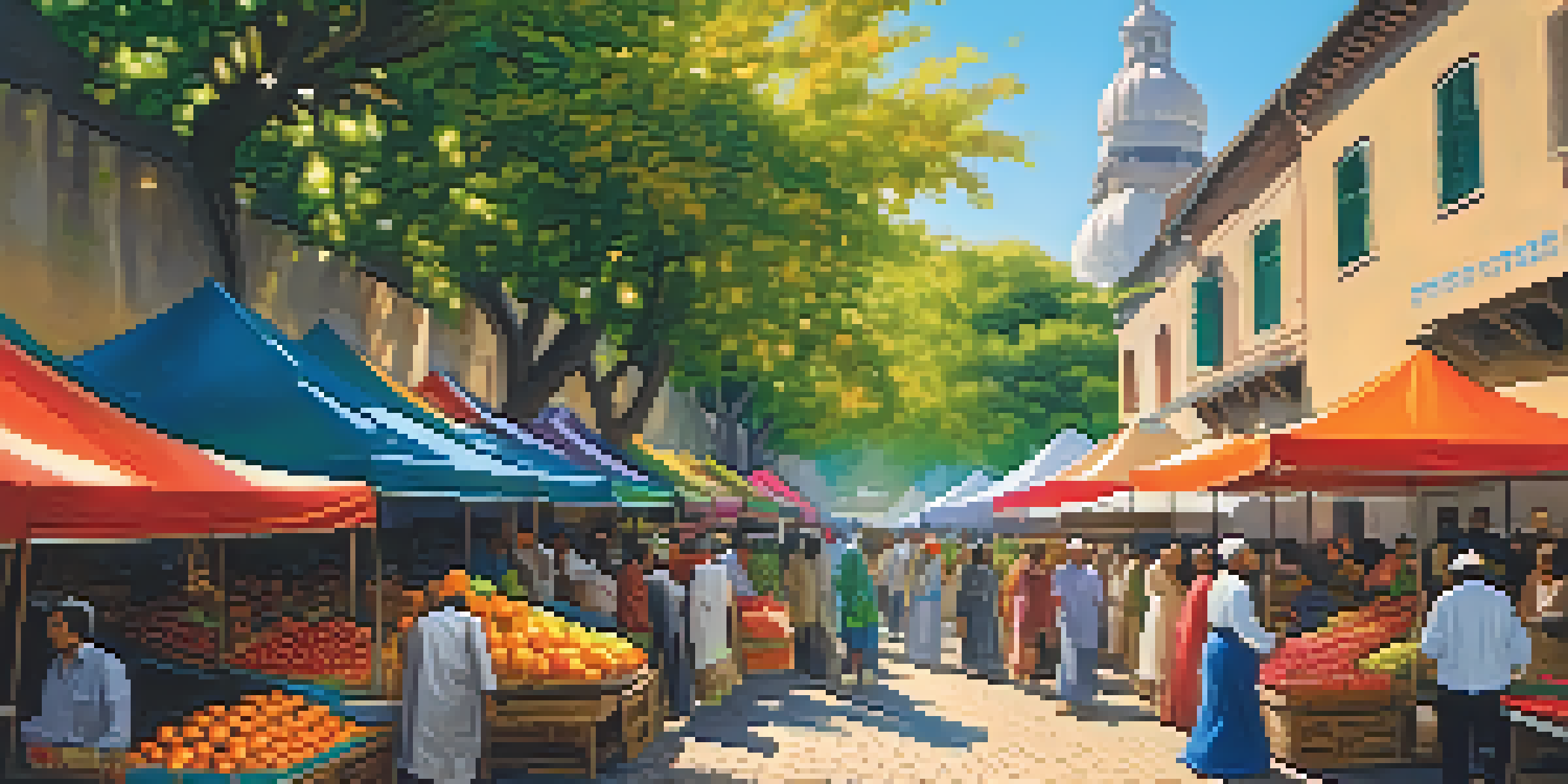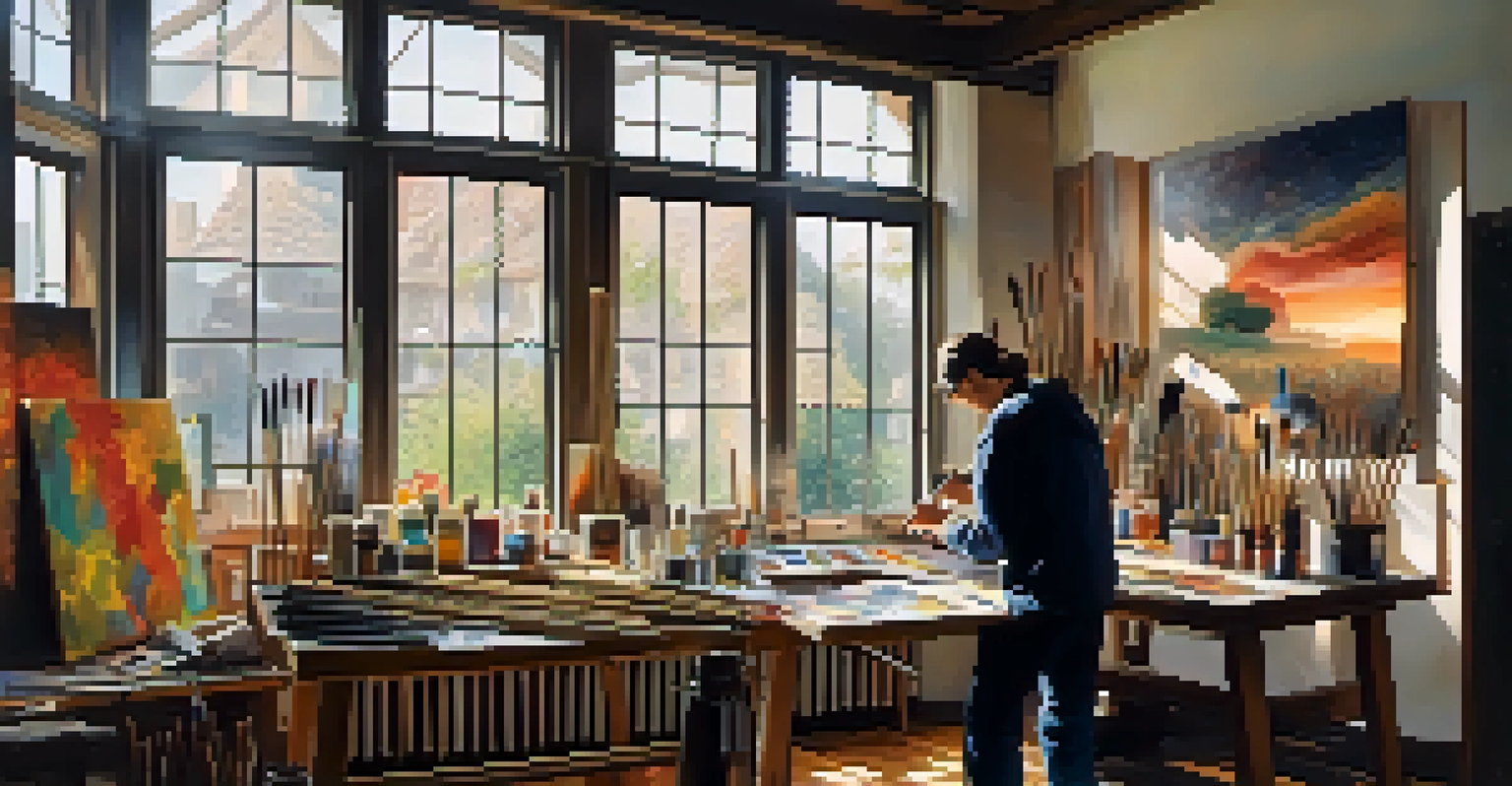The Influence of Cultural Perspectives on Art Interpretation

Understanding Cultural Perspectives in Art
Cultural perspectives play a crucial role in how we interpret art. Each culture has its own values, beliefs, and traditions that shape the way its people view artistic expressions. For instance, a piece of abstract art may evoke different feelings in someone from a Western culture compared to someone from an Eastern culture.
Art is a reflection of the culture that creates it, and understanding that culture is essential to understanding the art itself.
These perspectives are influenced by history, religion, and social norms, creating a rich tapestry of interpretations. When we encounter art, we're not just looking at colors and shapes; we're also engaging with the cultural stories that inform those elements. This can lead to diverse interpretations of the same artwork.
Related Resource
Understanding these cultural nuances allows us to appreciate art on a deeper level. It encourages open-mindedness, inviting us to explore and respect interpretations that may differ from our own.
Historical Context and Its Impact on Art
The historical context of an artwork greatly influences its interpretation. Art movements often arise in response to societal changes, and understanding this backdrop can enhance our appreciation. For example, the turmoil of the French Revolution inspired many artists, leading to works that reflect themes of struggle and liberation.

When we place art within its historical framework, we can see how it mirrors the sentiments and challenges of the time. This context helps us understand why certain symbols or themes are prevalent in an artist's work. It’s like reading a novel with a historical lens; the story becomes richer and more meaningful.
Cultural Context Shapes Art Interpretation
Understanding cultural perspectives enhances our appreciation of art by revealing the diverse meanings shaped by different values and traditions.
By acknowledging the historical influences, we not only gain insight into the art itself but also into the culture that birthed it. This understanding fosters a deeper connection between the viewer and the artwork.
Cultural Symbolism in Artistic Expression
Art is often laden with cultural symbolism, which can vary widely across different societies. Colors, shapes, and motifs can carry specific meanings that are deeply rooted in cultural traditions. For instance, in many Asian cultures, the color red symbolizes luck and prosperity, while in Western cultures, it may evoke passion or danger.
The beauty of art is that it allows us to look through the eyes of another, to understand their experiences and their world.
These symbols are not universal; they are shaped by the cultural narratives that surround them. As viewers, recognizing these symbols allows us to decode the layers of meaning in a piece of art. It’s akin to solving a puzzle where each piece reveals a different facet of the cultural story.
Related Resource
Understanding cultural symbolism enriches our interaction with art, allowing us to appreciate the depths of meaning that might otherwise go unnoticed. This awareness encourages a dialogue between cultures, fostering mutual respect and understanding.
Personal Experience and Subjectivity in Art
Our personal experiences shape how we interpret art, adding another layer of complexity to cultural perspectives. Individual background, emotions, and life experiences inform our understanding of artistic expressions. For example, someone who has experienced loss may interpret a melancholic painting differently than someone who hasn’t.
This subjectivity is what makes art so powerful; it resonates with us on a personal level. Our unique interpretations can enrich discussions about art, revealing insights that might not be immediately apparent. It’s this interplay of personal and cultural perspectives that creates a vibrant art discourse.
Historical Influence on Artistic Expression
Art often reflects the historical context in which it was created, allowing us to connect with the sentiments and struggles of a particular time.
In embracing our subjectivity, we open ourselves to a broader range of interpretations, encouraging dialogue and exploration in the art community. This reinforces the idea that art is not just to be viewed but to be experienced and felt.
Globalization and Its Effects on Artistic Interpretation
Globalization has dramatically altered the way art is interpreted around the world. As cultures blend and interact, the exchange of ideas and artistic styles creates new interpretations that can transcend traditional boundaries. This melting pot of influences can lead to innovative art forms that reflect a global identity.
However, globalization can also lead to the dilution of cultural symbols and meanings. As artists draw inspiration from various cultures, there’s a risk of misrepresentation or appropriation, where the original significance is lost. This raises important questions about authenticity and respect in artistic expression.
Related Resource
Navigating these complexities requires sensitivity and awareness of cultural contexts. As we appreciate global art, it’s essential to honor the origins and meanings behind it, ensuring that diverse voices are heard and respected.
The Role of Education in Art Interpretation
Education plays a vital role in shaping our understanding of art and its cultural contexts. Through art education, we learn not only about techniques and styles but also about the historical and cultural narratives that inform artistic expression. This knowledge empowers us to engage with art more critically and thoughtfully.
Moreover, educational initiatives that promote cultural awareness can foster appreciation for diverse artistic interpretations. Workshops, museum programs, and community art projects can bridge gaps between different cultures, encouraging collaboration and dialogue. This is where real growth happens, as we learn from each other.
Education Enhances Art Engagement
Art education fosters a deeper understanding of cultural narratives, empowering individuals to engage more thoughtfully with diverse artistic expressions.
By prioritizing education in the arts, we cultivate a deeper understanding of cultural perspectives. This not only enriches our personal experiences with art but also contributes to a more inclusive art community.
Conclusion: Embracing Diverse Perspectives in Art
In conclusion, the influence of cultural perspectives on art interpretation is profound and multifaceted. By recognizing the various factors that shape our understanding—historical context, symbolism, personal experience, and globalization—we can appreciate the richness of artistic expression. Each artwork becomes a conversation between cultures and individuals.
Embracing diverse perspectives allows us to engage with art in a more meaningful way. It encourages us to step outside our own experiences and consider the viewpoints of others, fostering empathy and understanding. This is the beauty of art; it invites us to explore the world through different lenses.

As we continue to navigate this complex landscape, let’s celebrate the diversity that art brings to our lives. By doing so, we not only enrich our own experiences but also contribute to a more interconnected and compassionate world.